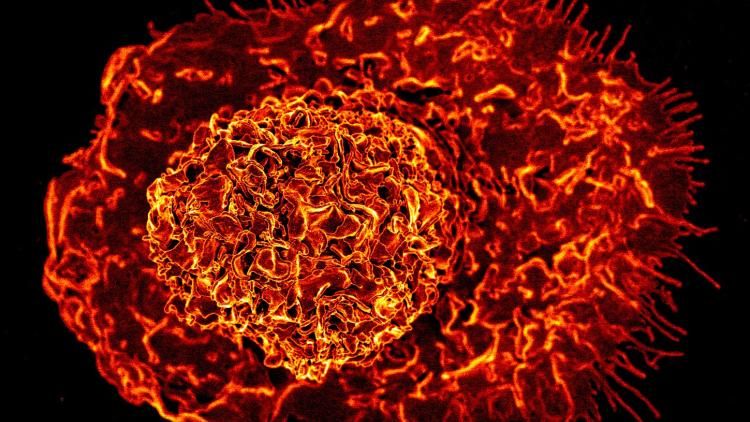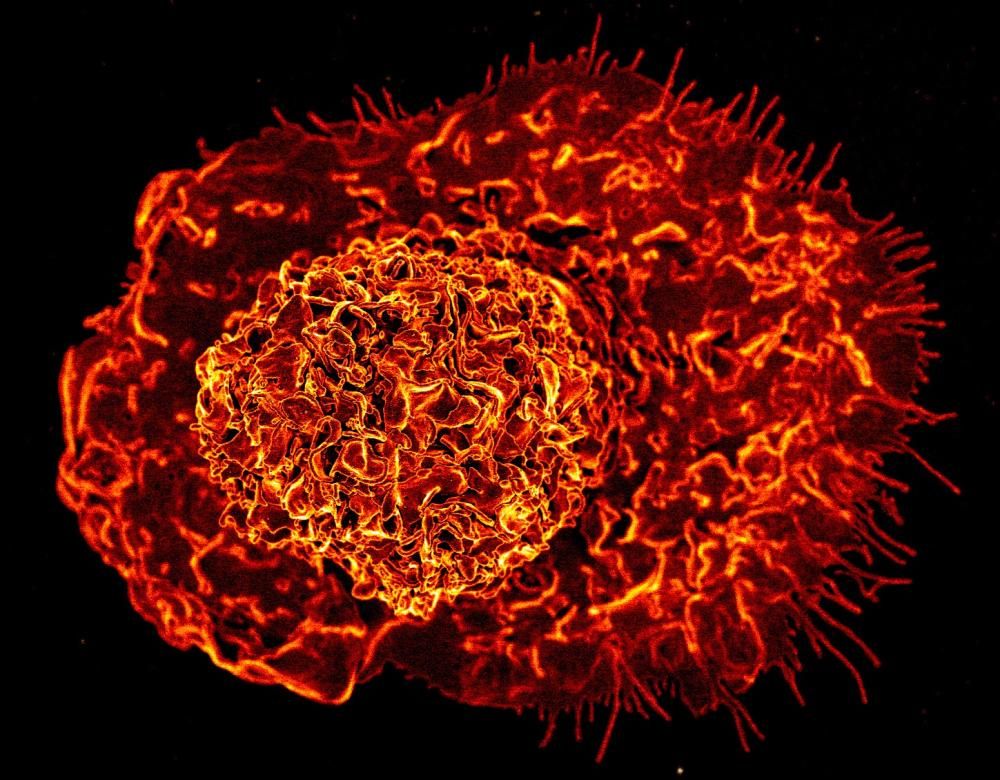Drug discovery and development
We identify, develop and commercialise promising ideas into successful cancer therapeutics, diagnostics and enabling technologies.
MOv18, the first IgE antibody to enter clinical development, exemplifies the essential nature of our non-profit research-driven organisation in bringing truly ground-breaking advances to the treatment of cancer.

What I like about MOv18 (and why I think it is important to share this story) is that it would not have got this far without the Centre for Drug Development (CDD). MOv18 reached Phase 1 clinical development despite the challenges associated with introducing novel approaches to cancer treatment. MOv18’s development is a perfect example of what CDD is meant to do – that's the early clinical development of highly innovative potential new treatments for cancer. Fourteen years ago, no one had the bravery to take forward the idea of harnessing the therapeutic potential of IgE antibodies for treating cancer.
When I joined Cancer Research UK in March 2009, the need to decrease the number of projects in the CDD portfolio was starkly apparent. Long project development timelines prompted negative feedback from collaborators characterising the organisation as good but slow and unresponsive. This was largely due to the 45 projects in the portfolio far exceeding the capacity of the teams dedicated to advancing them. Consequently, a decision to reduce the size of the portfolio to a number commensurate with the available resources was swift.
Within that triage process, MOv18 ranked high on the list of projects to cut. IgE’s association with anaphylactic shock was, for many, enough reason to steer clear. Other stumbling blocks included there being no manufacturing process, or established standards for manufacturing IgE antibodies. And the project would require a great deal of preclinical investigation because so little was known. However, a small core of people in the department advocated for not cutting MOv18 and provided a convincing case by pointing out the promise in the potency of the IgE’s non-toxic, invader-clearing immune cascades as a therapeutic approach to curtailing cancer cell growth and expansion.
After making it past the first cut, the preclinical work and manufacturing development processes kicked off. Manufacturing presented the second hurdle to the project reaching the clinic because at the time, therapeutic antibody manufacturing process development focused largely on IgG antibodies. Establishing a process to safely manufacture enough MOv18, an IgE antibody, for clinical trials, essentially started from scratch. Fortunately, the Cancer Research UK network at the time included a dedicated biotherapeutics manufacturing facility.
Having a Cancer Research UK manufacturing facility was key to the success of the project. Developing a process to produce the quantities of MOv18 needed for clinical research took several years – a prohibitively expensive prospect for biotechs beholden to market pressures. The facility provided the ability to take the time needed to establish a manufacturing process for IgE.
The preclinical work proceeded too. But as the team prepared to file for a Clinical Trial Authorisation (CTA), a requirement from the Medicine and Healthcare Products Regulatory Agency (MHRA) for nonhuman primate toxicology data marked the third time the project could have ended up on the heap of promising drug discoveries that might have been. I thought the project was down for the count when the Cancer Research UK Executive Board decided it would not relax its stance against funding work in higher animal species. This was Cancer Research UK policy at the time; however, I was hoping the Board would make an exception based on the extensive level of investment made and the promise associated with MOv18’s successful development.
When I took the decision back to the team, they found an alternative route. We had science on our side. The team came up with a plan to present the case for using an alternative model for toxicology screening. The plan was based on very strong scientific argument for using a bioengineered model for toxicology screening that would be as relevant, if not more relevant, than the primate model. The proposal prompted an incredibly helpful dialogue with the MHRA and subsequently the team generated the data and we received a CTA.
After the project cleared this third hurdle, the clinical trial opened but the pace of recruitment for was necessarily long, slow and very cautious. Phase 1 took five years to recruit and the results proved beyond doubt that you could dose humans with IgE and manage the side effects.
MOv18’s journey to the clinic exemplifies the instrumental nature of our non-profit research-driven organisation in bringing truly ground-breaking advances to the treatment of cancer. The development of MOv18 has taken 14 years so far and over the course of that time the project was nearly abandoned three times. The biotech company, Epsilogen, licensed MOv18 in 2020 and recently raised $40 million to drive the field forward. In addition to advancing MOv18 through the clinic, the team at Epsilogen is using protein engineering to combine the best characteristics of IgE and IgG for therapeutically targeting cancer cells.

Nigel Blackburn joined Cancer Research UK in 2009 as Director of Drug Development.
